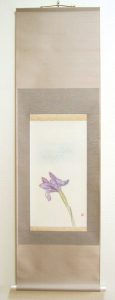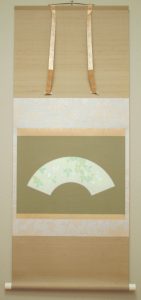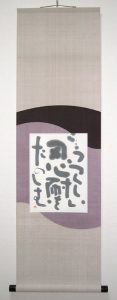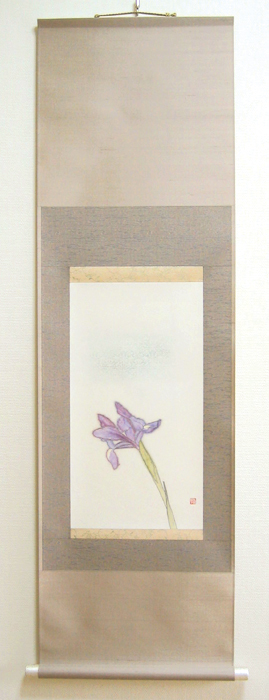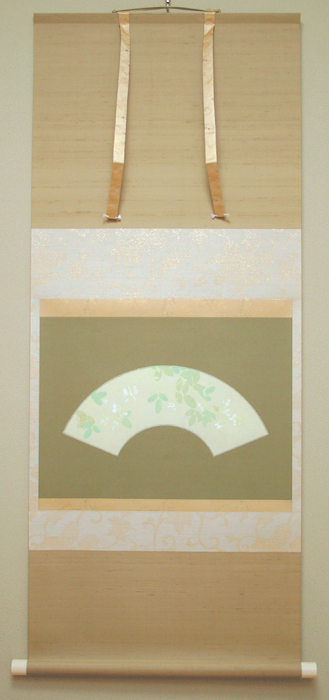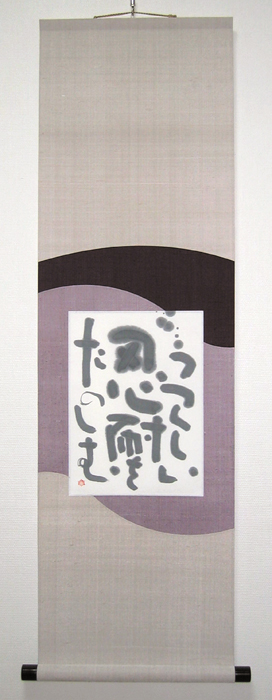Our ambition is to pass on the beautiful senses of the Japanese to the next generation by paying attention to the quality and detail of materials.
“Hyogu is costume…”
We relate picture mounts (Hyogu) to costumes when explaining about its function. Nihonga paintings are often made of fragile materials such as silk and hand-made paper. The empty spaces in the paintings are considered to be an important aspect of the painting, and special glue called >>”Nikawa” is used to settle the paint. These factors also contribute to the fragility of these paintings.
Therefore, “Hyogu” plays the role of bringing out the good features of the painting, and protecting the painting from continuous exposure to fluctuating air conditions in order to keep the painting in its best condition for display and storage.
|
アイリス / Iris
|
萩 / Bush clover
|
うつくしい忍耐をたのしむ
|
|
アイリス / Iris
|
|
萩 / Bush clover
|
|
うつくしい忍耐をたのしむ / Enjoy the beautiful patience
|
About Urauchi (Lining)
Lining is the principle work in picture mounting. This protects the paper from the back and it is also an important technique for storing the paintings. In order to display paintings, we make them into scroll-hangings by attaching paper or fabric on the back, or into paper screens (‘byobu’) by putting together many layers of paper on a wooden structure. This makes the painting more suitable for display and storage.
To make scroll-hangings
1. The painting is slightly moistened.
2. The first paper lining (hada-ura) is attached to the painting on a crafts table. *This lining is made by a very thin piece of paper (kouzo plant) and strong glue in order to avoid separation.
3. The next paper lining (masu-ura-uchi) is relined twice or three times depending on the size of the painting.
* This process balances out the difference in thickness and strength between the painting and the surrounding fabric material (kireji).
* The lining is made with “Misu”paper, which is a soft paper with white sand blended into it, and weak glue is used in order to make it flexible.
4. A fabric material is lined around the work.
5. The work is shaped into Jikusou (scroll shape), and the final lining is added (sou-ura-uchi).
* The lining is added to enable the work to be rolled and spread out.
* The paper used here is called “Uda” paper.

